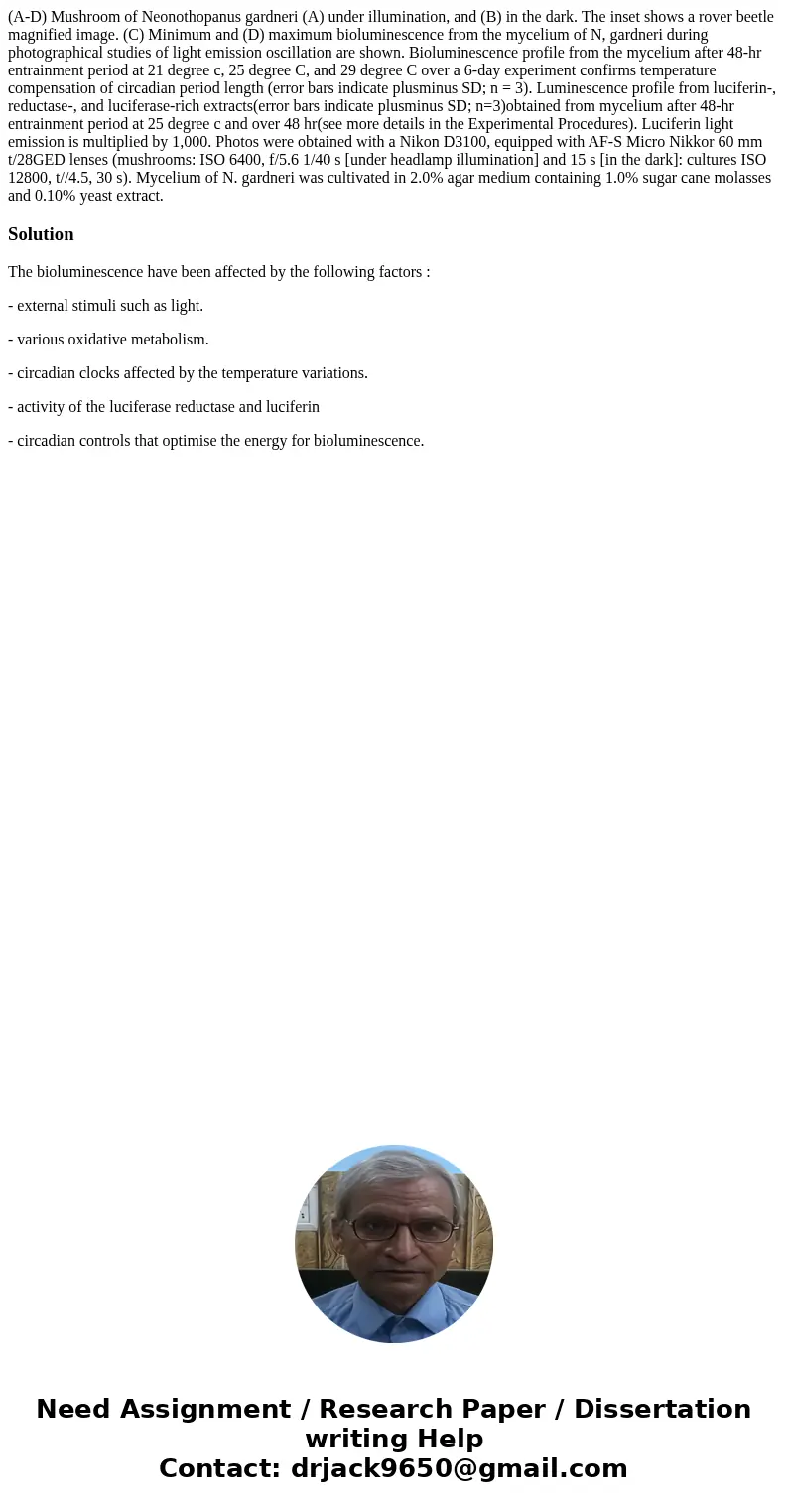AD Mushroom of Neonothopanus gardneri A under illumination a
(A-D) Mushroom of Neonothopanus gardneri (A) under illumination, and (B) in the dark. The inset shows a rover beetle magnified image. (C) Minimum and (D) maximum bioluminescence from the mycelium of N, gardneri during photographical studies of light emission oscillation are shown. Bioluminescence profile from the mycelium after 48-hr entrainment period at 21 degree c, 25 degree C, and 29 degree C over a 6-day experiment confirms temperature compensation of circadian period length (error bars indicate plusminus SD; n = 3). Luminescence profile from luciferin-, reductase-, and luciferase-rich extracts(error bars indicate plusminus SD; n=3)obtained from mycelium after 48-hr entrainment period at 25 degree c and over 48 hr(see more details in the Experimental Procedures). Luciferin light emission is multiplied by 1,000. Photos were obtained with a Nikon D3100, equipped with AF-S Micro Nikkor 60 mm t/28GED lenses (mushrooms: ISO 6400, f/5.6 1/40 s [under headlamp illumination] and 15 s [in the dark]: cultures ISO 12800, t//4.5, 30 s). Mycelium of N. gardneri was cultivated in 2.0% agar medium containing 1.0% sugar cane molasses and 0.10% yeast extract.
Solution
The bioluminescence have been affected by the following factors :
- external stimuli such as light.
- various oxidative metabolism.
- circadian clocks affected by the temperature variations.
- activity of the luciferase reductase and luciferin
- circadian controls that optimise the energy for bioluminescence.

 Homework Sourse
Homework Sourse